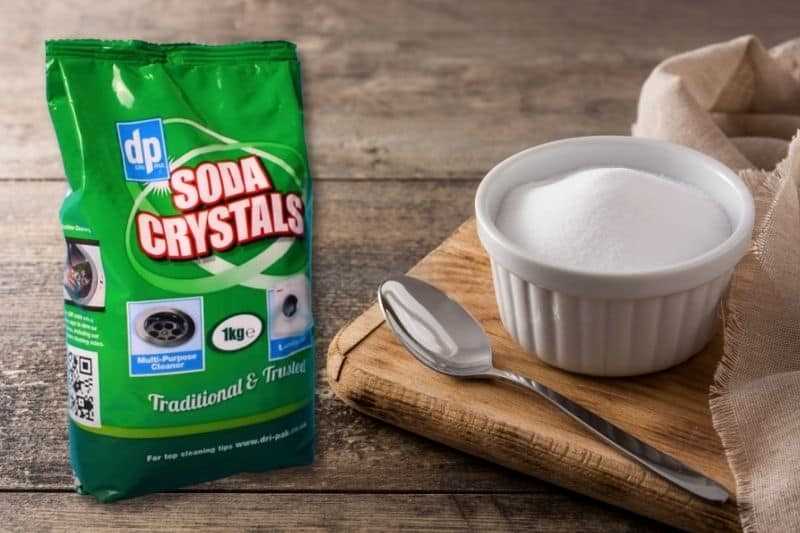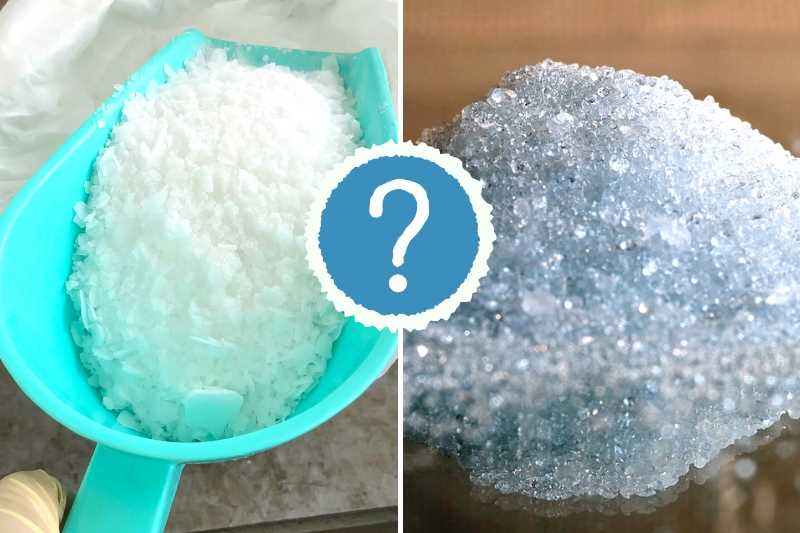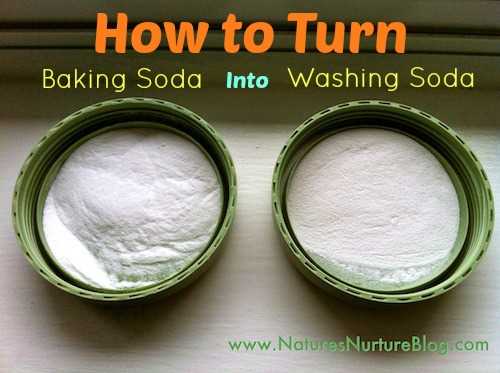




When it comes to household cleaning, two common substances that often get confused are caustic soda and soda crystals. While both can be effective for cleaning various surfaces, it is important to understand the key differences between the two to ensure their safe and proper use.
Caustic soda, also known as sodium hydroxide, is a highly corrosive and strong alkaline compound. It is typically sold in a white solid form and is widely used in various industrial processes. Caustic soda is known for its ability to dissolve grease, oils, and fats, making it a powerful cleaning agent. However, due to its corrosive nature, it should be handled with caution and protective gear, such as gloves and goggles, should be worn when using it.
Soda crystals, on the other hand, are a milder and more versatile cleaning agent. Also known as washing soda or sodium carbonate, soda crystals are a white crystalline substance that is less corrosive than caustic soda. Soda crystals are commonly used for a wide range of cleaning tasks, such as removing stains from clothes, cleaning ovens, and unclogging drains. They are also non-toxic and biodegradable, making them a more environmentally-friendly choice compared to caustic soda.
In conclusion, while both caustic soda and soda crystals can be effective for cleaning, it is important to understand their differences and use them accordingly. Caustic soda should be handled with caution due to its corrosive nature, while soda crystals offer a milder and more eco-friendly option for everyday cleaning tasks.
Caustic Soda
Overview
Caustic soda, also known as sodium hydroxide (NaOH), is a highly corrosive and versatile chemical compound. It is typically available in solid form as white crystalline flakes, pellets, or beads.
Uses
Caustic soda has numerous industrial and household applications due to its strong caustic and alkaline properties. Some common uses of caustic soda include:
- Manufacturing of paper and pulp
- Production of textiles and fabrics
- Water treatment and purification
- Manufacturing of detergents and soaps
- Removal of grease and stains
- Processing of metals and aluminum
Properties

Caustic soda is a highly reactive substance that can easily dissolve in water. It is highly alkaline, with a pH level of 14, making it a strong base. It is also highly corrosive and can cause severe burns and irritation if it comes into contact with the skin or eyes.
Handling and Safety
Caustic soda should be handled with caution due to its corrosive nature. When using caustic soda, it is important to wear appropriate protective clothing, such as gloves and goggles, to prevent any accidents or injuries. It should also be stored in a secure place, away from incompatible substances.
Environmental Impact
Caustic soda can have harmful effects on the environment if not properly managed. It is important to dispose of caustic soda waste properly and in accordance with local regulations to prevent pollution.
Conclusion

Caustic soda is a powerful and versatile chemical compound with a wide range of industrial and household applications. However, due to its corrosive nature, it must be handled and stored with care to ensure safety. Proper disposal of caustic soda waste is also crucial to mitigate any negative environmental impact.
What is Caustic Soda?
- Caustic soda, also known as sodium hydroxide (NaOH), is a strong alkaline compound that is commonly used in various industries.
- It is produced through the electrolysis of sodium chloride (salt) solution, and it is available in the form of solid flakes, pellets, or a concentrated solution.
- Caustic soda is highly corrosive and can cause severe burns if it comes into contact with the skin or eyes.
- In addition to its industrial uses, caustic soda is also used in household cleaning products, such as drain cleaners and oven cleaners.
Some key properties and characteristics of caustic soda include:
- Strong alkalinity: Caustic soda has a high pH level and is considered to be a strong base.
- Hygroscopic: It has the ability to absorb moisture from the air, which can cause it to dissolve and become more concentrated.
- Reactiveness: Caustic soda can react with various substances, including acids and metals. It should be handled with care and stored in a secure manner.
- Applications: Caustic soda is used in a wide range of industries, such as chemical manufacturing, pulp and paper production, textile processing, water treatment, and soap making.
| Common Names | Chemical Formula |
|---|---|
| Caustic soda | NaOH |
| Sodium hydroxide | NaOH |
In summary, caustic soda is a strong alkaline compound that has various industrial applications. It should be handled with caution due to its corrosive nature and can be found in solid or liquid form.
Uses of Caustic Soda
Caustic soda, also known as sodium hydroxide, is a versatile chemical compound that is widely used in various industries and applications. Some of its major uses include:
1. Industrial Cleaning
- Caustic soda is a highly effective cleaning agent and is extensively used in industries for cleaning equipment, tanks, and pipes.
- It is commonly used for removing grease, oil, dirt, and other stubborn contaminants.
2. Manufacturing of Chemicals
- Caustic soda is a key ingredient in the production of various chemicals like detergents, soaps, and paper.
- It is used in the saponification process to convert fats and oils into soap.
- It is also used in the production of textiles, plastics, and pharmaceuticals.
3. Water Treatment

- Caustic soda is often used in water treatment plants for the purification of drinking water and wastewater.
- It is used to adjust pH levels and neutralize acidic water.
- It is also used in the coagulation and flocculation processes to remove impurities and suspended solids from water.
4. Food Industry

- Caustic soda is used in the food industry for various purposes, such as cleaning and sanitizing equipment.
- It is used for cleaning food processing equipment, containers, and pipelines.
- It is also used in the preparation of certain food products, such as olives and cocoa processing.
5. pH Regulation
- Caustic soda is commonly used to adjust pH levels in various industries, such as metal processing and textile dyeing.
- It is used to increase the alkalinity of solutions and to neutralize acidic substances.
6. Soap Making
- Caustic soda is a crucial ingredient in the traditional process of soap making.
- It is used to react with fatty acids or oils to form soap through the saponification process.
These are just a few examples of the many uses of caustic soda. Its versatility and effectiveness make it an essential chemical compound in various industries worldwide.
Soda Crystals
Soda Crystals, also known as washing soda or sodium carbonate, are a versatile and affordable household cleaning product. They are commonly used for a variety of cleaning tasks, including removing grease and stains, unclogging drains, and freshening laundry.
Soda crystals are highly soluble in water and have a pH level of around 11, which makes them effective at breaking down organic matter and removing tough stains. They are particularly useful for cutting through grease and grime, making them a popular choice for cleaning kitchen surfaces, cookware, and appliances.
One of the key advantages of soda crystals is their affordability. They are typically much cheaper than other cleaning products on the market, making them a cost-effective option for everyday cleaning tasks. Additionally, soda crystals are non-toxic and environmentally friendly, making them a popular choice for those seeking more eco-friendly cleaning alternatives.
When using soda crystals, it’s important to follow proper safety precautions. Avoid contact with eyes, skin, and clothing, and always keep them out of reach of children and pets. It’s also a good idea to wear gloves and protective eyewear when handling soda crystals.
Here are some common uses for soda crystals:
- Removing tough stains from clothing: Add a scoop of soda crystals to your laundry detergent to help remove stubborn stains.
- Cleaning greasy and grimy surfaces: Dissolve some soda crystals in hot water and use the solution to clean kitchen surfaces, appliances, and cookware.
- Unclogging drains: Pour a handful of soda crystals down the drain, followed by boiling water, to help clear clogs and remove odors.
- Removing burnt-on food from pans: Fill the pan with hot water and soda crystals and let it soak overnight. The next day, scrub away the burnt-on food.
- Removing limescale: Create a paste by mixing soda crystals with a little water, then apply the paste to limescale deposits and scrub with a sponge or brush.
In summary, soda crystals are a versatile and affordable cleaning product that can be used for a variety of household cleaning tasks. They are effective at removing grease and stains, unclogging drains, and freshening laundry. With proper safety precautions, soda crystals can be a cost-effective and eco-friendly alternative to other cleaning products on the market.
What are Soda Crystals?
Soda crystals, also known as washing soda or sodium carbonate, are a versatile household cleaning product. They are derived from natural minerals and have been used for various cleaning purposes for many years.
Soda crystals are typically white, crystalline solids with a high alkalinity, making them effective in cutting through grease, stains, and tough dirt. They have a pH level of around 11, which means they are highly alkaline.
Unlike caustic soda, soda crystals are less corrosive and toxic. They are generally considered to be a safer alternative for cleaning purposes, as they are less harmful to humans, pets, and the environment when used correctly.
Soda crystals are water-soluble and can be dissolved in water to create a strong cleaning solution. They are particularly effective at removing stubborn stains from fabrics, unblocking drains, and degreasing surfaces. Additionally, soda crystals can also be used as a laundry booster, to soften hard water, and to clean and deodorize household appliances.
When using soda crystals, it’s important to follow the instructions on the packaging and take proper safety precautions. It’s advisable to wear gloves and protective eyewear, as direct contact with soda crystals can cause skin irritation. In case of accidental ingestion or inhalation, seek medical attention immediately.
Overall, soda crystals are a versatile and effective cleaning product that can be used in various areas of the home. They offer a more gentle and environmentally friendly alternative to caustic soda without compromising on cleaning power.
Uses of Soda Crystals
- Cleaning and disinfecting: Soda crystals can be used as a cleaning agent and disinfectant for various surfaces. They can help remove grease, grime, and stains from kitchen surfaces, bathroom tiles, and even greasy oven trays.
- Laundry booster: Adding soda crystals to your laundry can help boost the cleaning power of your detergent. They can help remove stubborn stains and brighten whites.
- Drain cleaner: Soda crystals are an effective and eco-friendly option for unclogging drains. By pouring a mixture of soda crystals and hot water down the drain, you can break down and dissolve blockages.
- Deodorizing: Soda crystals can help neutralize odors in various areas of your home. You can use them to freshen up your carpets, rugs, or even your shoes. Simply sprinkle soda crystals on the affected area, leave it for some time, and then vacuum it up.
- Paint and wallpaper stripper: Soda crystals can be used to remove old paint or wallpaper. By creating a paste with soda crystals and water, applying it to the painted or wallpapered surface, and leaving it for a while, you can then easily scrape off the old paint or wallpaper.
- Outdoor cleaning: Soda crystals can be useful for cleaning outdoor surfaces such as patio furniture, garden tools, and even algae or moss on driveways and paths. They can help remove dirt and grime, leaving your outdoor areas looking refreshed.
Key Differences

Caustic Soda
- Also known as sodium hydroxide.
- Chemical formula: NaOH.
- Highly corrosive and can cause severe burns and irritation to the skin and eyes.
- Caustic soda is available in solid or liquid form.
- It is commonly used in cleaning products, drain cleaners, and industrial processes.
- Caustic soda is more concentrated and therefore more potent compared to soda crystals.
Soda Crystals
- Also known as washing soda or sodium carbonate.
- Chemical formula: Na2CO3·10H2O.
- Mildly alkaline and less corrosive compared to caustic soda.
- Soda crystals are available in crystalline form.
- They are commonly used as a household cleaning agent, laundry detergent, and in some cooking recipes.
- Soda crystals are less potent compared to caustic soda and are generally safer to handle.
| Aspect | Caustic Soda | Soda Crystals |
|---|---|---|
| Chemical Name | Sodium Hydroxide | Sodium Carbonate |
| Chemical Formula | NaOH | Na2CO3·10H2O |
| Corrosiveness | Highly corrosive | Less corrosive |
| Physical Form | Solid or liquid | Crystalline |
| Common Uses | Cleaning products, drain cleaners, industrial processes | Household cleaning, laundry detergent, cooking |
| Potency | More potent | Less potent |
FAQ
What is caustic soda?
Caustic soda, also known as sodium hydroxide, is a strong alkaline compound that is commonly used in industrial and household cleaning products.
What are soda crystals?
Soda crystals, also known as sodium carbonate, are a type of salt that is commonly used for cleaning and laundry purposes.
What are the key differences between caustic soda and soda crystals?
The key difference between caustic soda and soda crystals lies in their chemical composition. Caustic soda, or sodium hydroxide, is a strong alkaline compound, while soda crystals, or sodium carbonate, are a type of salt. Caustic soda is more corrosive and can cause burns, while soda crystals are less corrosive and safer to handle.
Which one should I use for cleaning purposes?
The choice between caustic soda and soda crystals depends on the specific cleaning task. Caustic soda is more powerful and effective for removing tough stains and grease, but it should be used with caution due to its corrosive nature. Soda crystals, on the other hand, are milder and can be used for general cleaning tasks. It is important to read and follow the instructions on the product labels to ensure safe and effective use.












